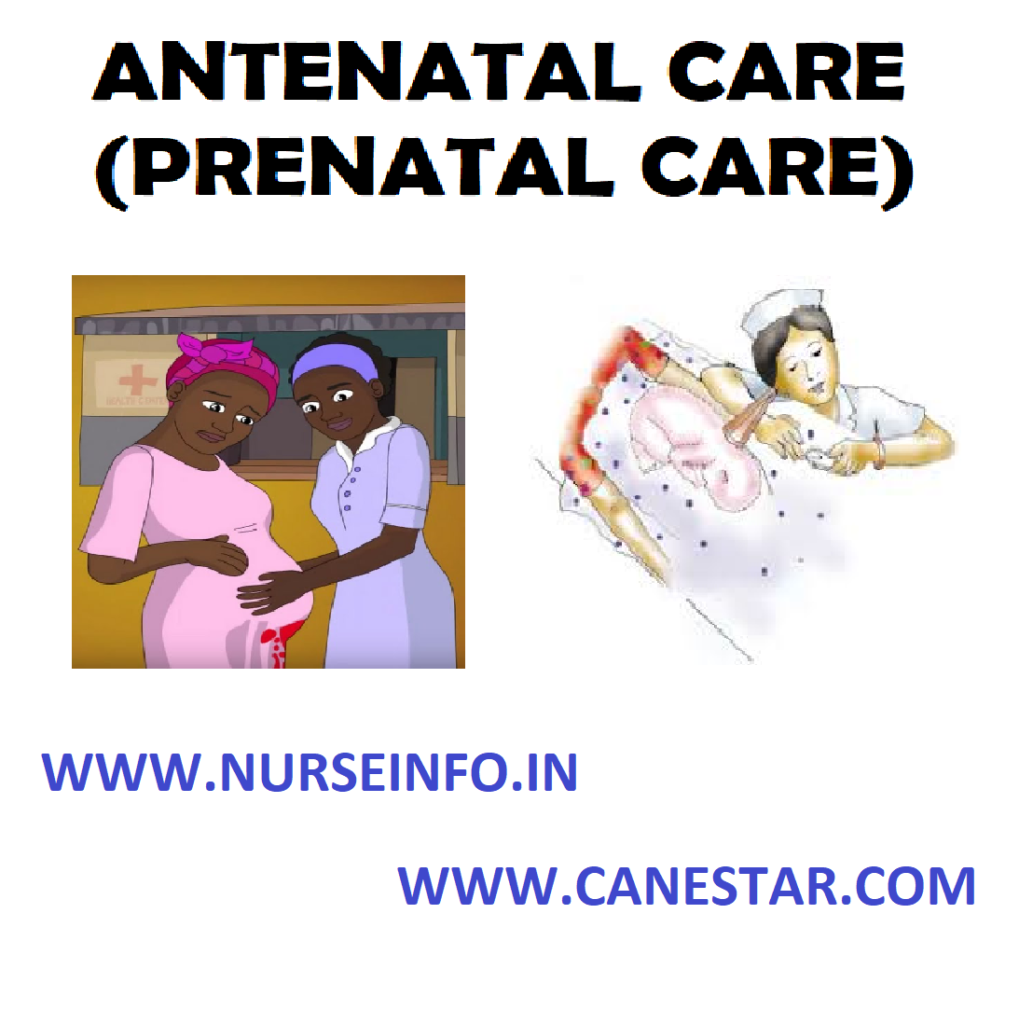ANTENATAL CARE – Objectives, Antenatal Examination, Antenatal Assessment, Antenatal Care and Attention and Role of Community Health Nurse at Antenatal (MATERNAL AND CHILD HEALTH NURSING)
Antenatal care began as a social service in Paris in 1788 for women who had committed the double inconvenience of being pregnant and destitute. Antenatal care to be provided to pregnant women to help them tide over the period of pregnancy successfully and to ensure a healthy pregnancy outcome
OBJECTIVES
- To maintain the health and well-being of pregnant women and their fetuses through the period of pregnancy
- To identify risk factors and apply appropriate measures of intervention as early as possible
- To identify complications of pregnancy and institute immediate remedial measures, including referral care
- To impart health education to women on pregnancy and childbirth, and to sensitize them on the desirability of family planning, fertility control and breastfeeding
- To lay the foundations of a healthy pregnancy outcome and good mother-child relationship
ANTENATAL EXAMINATION
Examining mother to record height, weight, blood pressure and to rule out anemia, jaundice, edema, varicosities, breast tumors, nipple deformities, hydramnios, multifetal pregnancy, anteversion or retroversion of the uterus and also to observe the height of fundus and presentation, position and attitude of fetus
ANTENATAL ASSESSMENT
Assessing maternal risk on the basis of gravidity maternal age, maternal weight, pregnancy weight gain, previous obstetric experience and accordingly placing mothers in low risk class for appropriate management
ANTENATAL CARE AND ATTENTION
The care provided for risk intervention, anemia prophylaxis and tetanus prophylaxis
Antenatal education and counseling provided about diet, work, exercise, travel, smoking, drinking, bathing, clothing, chemotherapy, family planning, breastfeeding, mental preparation, active participation and warning signals
ROLE OF COMMUNITY HEALTH NURSE AT ANTENATAL
- The community health nurse should assist the parents in understanding the anatomy and physiology of pregnancy, labor and birth
- Contact every expected mother early in pregnancy and help her seek adequate medical supervision
- Teach mother to monitor visual disturbances, edema of face, epigastric pain, signs of infection, burning on urination, any vaginal discharge and absence of or decrease in fetal movements after initial pressure
- Respond to mother’s questions about bathing, douching, work, sex, exercise, etc
- Help parents discuss and explore feeling related to child bearing and rearing
- Prepare mother for physical work of labour through the use of relaxation and breathing exercises for the various phases of labor
- Teach the mother to avoid over the counter or prescription drugs without checking with her care provider because many drugs considered harmless may be teratogenic to the developing fetus
- Teach the mother the importance of adequate fluid intake and moderate exercise to promote circulation and prevent stasis
- Demonstrating and teaching to mother and relatives on several aspects of maternity care
- The community health nurse acting as liaison between the hospital, health center, clinic and home in referring mothers to appropriate agency for safe delivery, when indicated
- Maintaining adequate records all mother in her area and recording relevant information adequately on follow-up visits
- Training midwives and dais and participating in training programs for nurses, midwives, village health nurses (health worker F/M)


